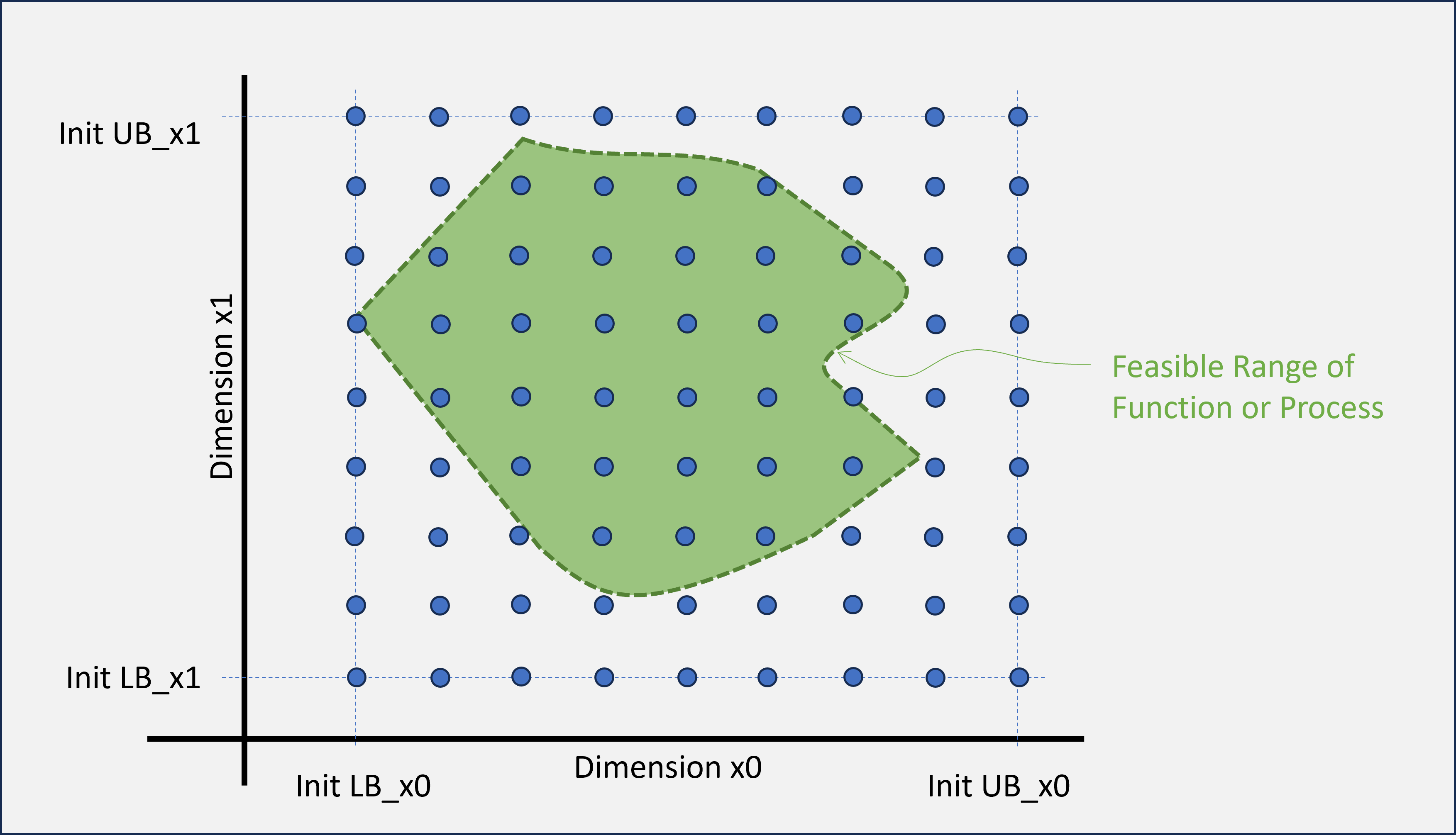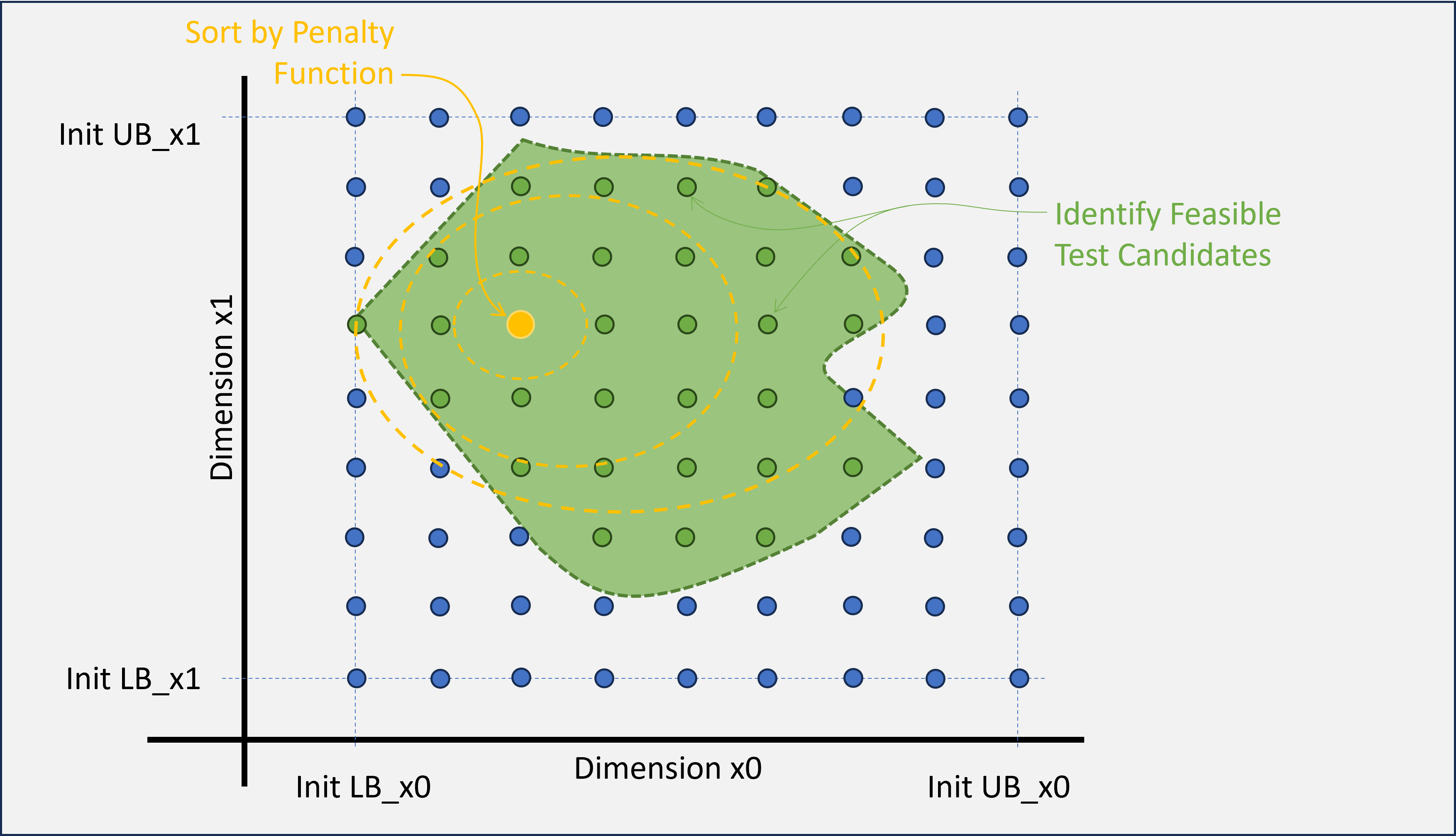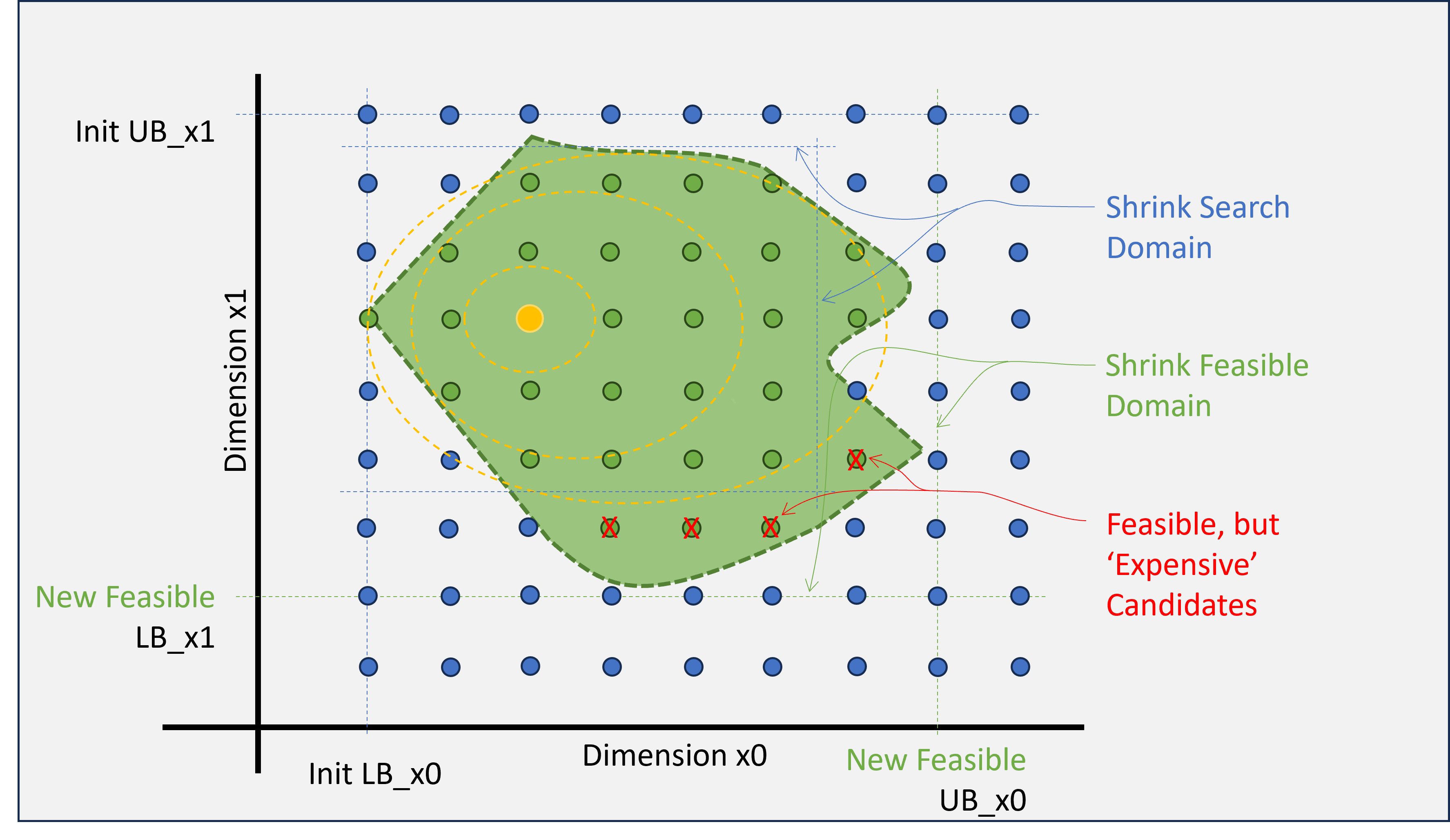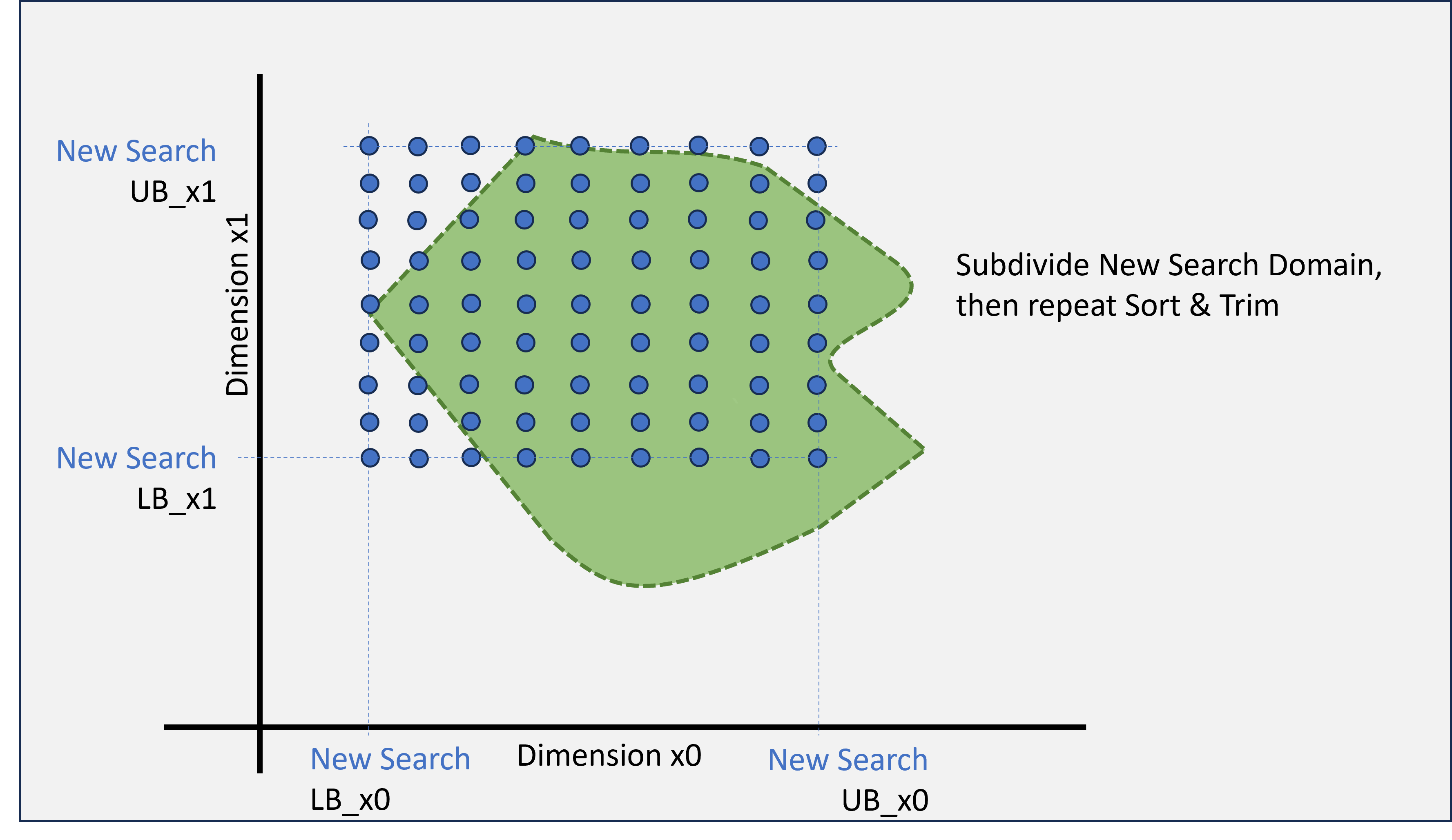Note: Information on the feasible domain usually not predictable. One benefit of this process, is early detection of invalid portions of the process range. When modeling the Objective Process for Optimization, it is a good idea to generate a special "error" return value; then handle and store these invalid results in a way as to not jeopardize the entire search process.

-
First, do a binary filter of feasible vs. non-feasible; trim infeasible grid points.
-
Next, sort by the Equality penalty (penalize wrt to compliance to the necessary equality conditions);
then trim poor matches.
Then, sort by the Inequality penalty (penalize wrt compliance to the inequality condition, and do not penalize if the inequality condition(s) is not violated at the grid location); then trim poor matches.
-
Finally, of the remaining qualified points, sort by the combined penalty function (Objective Function
+ Penalty); and trim the poor performers (if a statistically-sufficient number of candidates remain).

-
First, (if applicable) trim the overall feasible Bounds. Do not move the boundary any smaller
than what you have tested, and any dimension that yields a feasible result wrt any other dimensions
should be preserved.
-
Second, trim the domains with respect to the (feasible) penalty function evaluations. The trimmed
domain wrt a given dimension should be the midpoint of the outer most valid and trimmed domain.
This would allow for the possibility that a minimum is near an edge, but is still feasible.

-
For a general understanding of the problem, this may not be required, or advisable. The pre-process
approach will likely provide a good initial search argument.
-
However, if this Objective Function (or Process) is non-differentiable and/or discontinuous,
(or perhaps even for very complex Objective Functions), this entire approach to optimization
is a valid search method in its own right. The domains should converge wrt the overall preferred
combination of independent variables, and can even generate unexpected results by searching combinations
of inputs that may have gone unnoticed, or deemed impractical.
